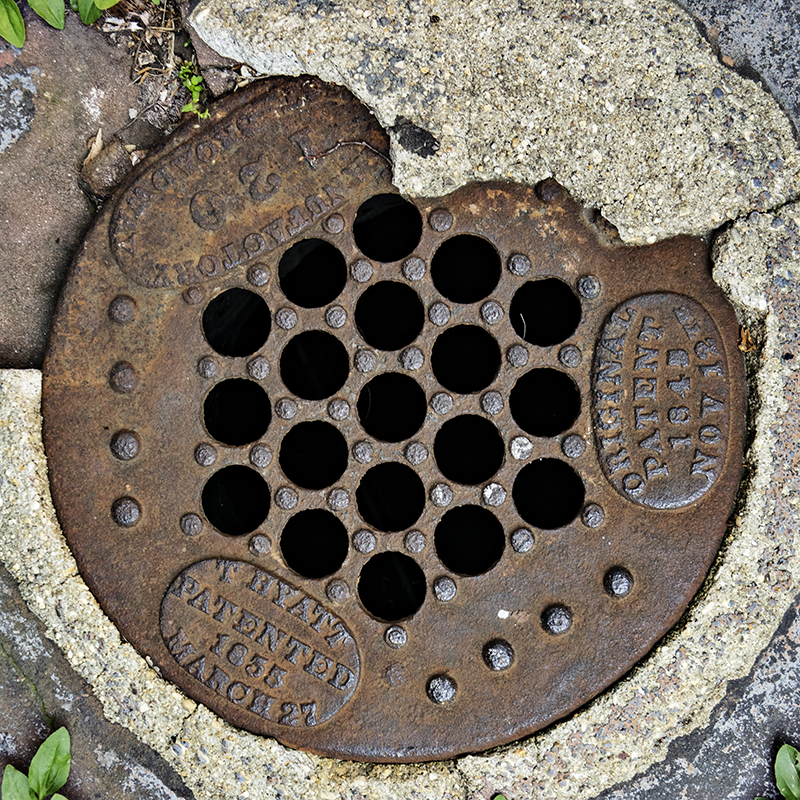DESIGN:
Hyatt was apparently a litigious fellow and vigorously protected his patents, thus the two patent announcements on the cover. The design forms a natural hexagonal honeycomb with 6 studs surrounding the internal glass plugs (only 5 on the outer). Whether the studs protected the glass is unclear, as after only 150 or 160 years, all have disappeared.
UTILITY:
The glass vaulted coal hole cover, was the domesticated version of the larger sidewalk vault covers. It developed as the home delivery of coal (rather than wood) for heating was first undertaken, and the delivery of the dirty rocks directly to the basement through a hole in the sidewalk made eminent sense.
RANGE:
The cover shown here is part of a group of 5 coal holes along the Willow St. side of a building on Pierrepont St. All 5 have a hexagonal stone bases. One has a plain, unmarked steel cover (1), one has a cover identical to this one but modified with piping for heating oil delivery (2). One has a strange, sarcophagus-like rectangle of stone covering it (3) and one has a burial mound-like lump of cement covering it. (4). It is this last one that may echo the history of this cover, as the concrete ring around the cover may be the remains of a similar mound. It appears that this cover has emerged only recently, as earlier, intrepid lid chroniclers (Diana Stuart & Walter Grutchfield) don't seem to have spotted this rather accessible cover. Immediately against the building wall are sections of vault-lighting that still retain many glass lenses (5).
Please Note: These covers are clearly visible from the sidewalk but are on private property.



